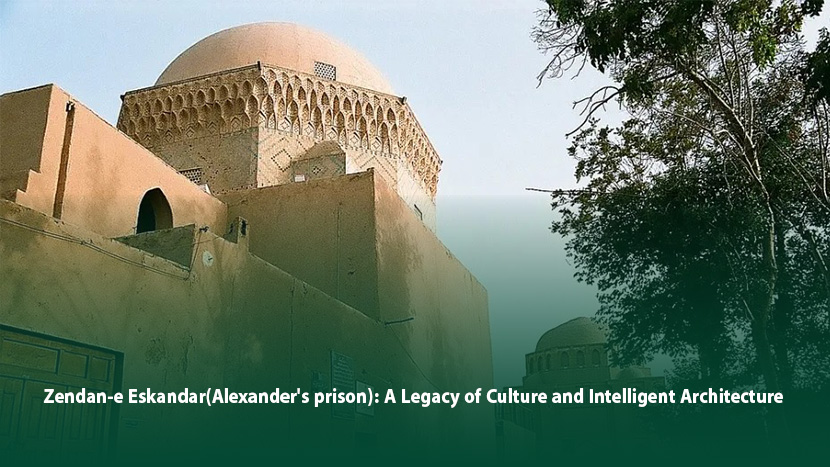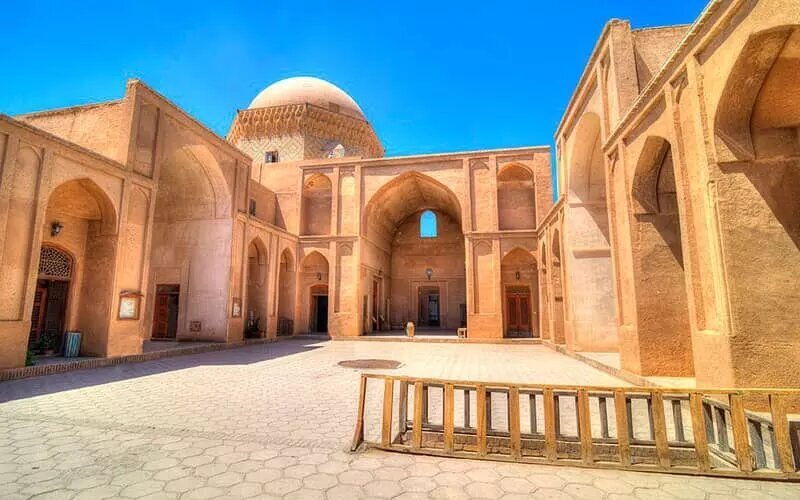
Zendan-e Eskandar: A Legacy of Culture and Intelligent Architecture
Zendan-e Eskandar, also known as Ziyaieh School, is one of the most remarkable historical and cultural monuments in the city of Yazd. This structure is not only notable for its legendary name and adventurous history but also for the intelligent architectural artistry employed in its construction.
Historical Background
Construction: Zendan-e Eskandar was built in the 7th century AH (13th century CE) during the Ilkhanid era. It was originally used as a religious school (madrasa) or seminary.
Name Origins: Some historical sources refer to this site as “Alexander’s Prison.” Various theories exist regarding this naming. One popular belief claims that Alexander the Great imprisoned Iranians here. However, most scholars consider this name to be a product of folklore and literary imagination, as no concrete historical evidence supports the claim.
Intelligent Architectural Artistry
Structure: The building is made of sun-dried mud bricks (adobe) and features a unique architectural style that makes it one of Yazd’s architectural highlights.
Dome: Its tall and elegant dome, approximately 18 meters high, is a defining feature. The dome incorporates advanced architectural techniques, such as an elliptical structure and natural ventilation systems, which contribute significantly to cooling the interior space.
Central Courtyard: A central courtyard, a hallmark of traditional Iranian architecture, is present in this building as well. It allows for open space and natural light, creating a harmonious and balanced atmosphere.
Windcatchers (Badgirs): The use of windcatchers is another smart architectural feature of this building. These structures were used for natural air circulation and climate control inside the building.

Cultural Heritage
Historical Significance: Zendan-e Eskandar is one of Yazd’s most significant historical buildings, representing the history, culture, and artistry of the city. It is a valuable part of Iran’s cultural heritage and plays a key role in preserving and showcasing Iranian-Islamic architectural history.
Tourist Attraction: As one of Yazd’s major tourist sites, it attracts numerous domestic and international visitors each year, eager to explore its architecture and rich historical background.
UNESCO’s Role: The inscription of Yazd’s historical cityscape on the UNESCO World Heritage List has greatly contributed to the protection and preservation of this monument, bringing both public and international attention to its importance.
Conclusion
Zendan-e Eskandar (Ziyaieh School) stands as one of Yazd’s most important historical sites, reflecting the brilliance of intelligent architecture and the region’s rich cultural legacy. This structure is not only a part of Iran’s cultural heritage but also a symbol of the glorious past and the advanced architectural knowledge of Iranians. Its preservation requires the attention and cooperation of all stakeholders,cultural authorities, local communities, and the global society.
Traveling to historical cities has many graces and gives you the opportunity to discover the secrets of the past. yazd and other ancient cities are areas full of historical wonders that will be attractive and exciting for any tourist. So be sure to put this region of Iran on your list of virtual tourist destinations (live and direct broadcast) and travel there with a relaxed mind and riding the waves.
- If you have personally traveled to yazd, please write your experiences and memories of the city for us and other readers to use these experiences to plan a dreamy and memorable trip.
By using form u agree with the message sorage, you can contact us directly now